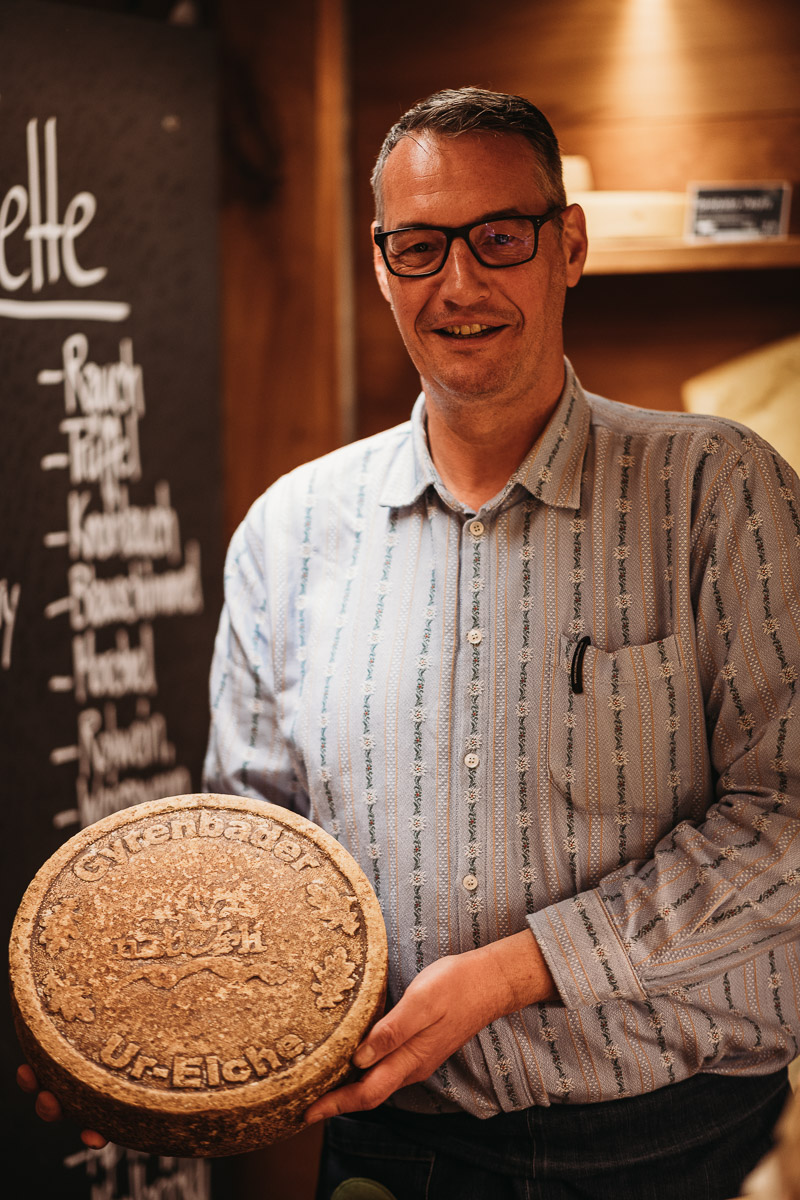Natürli is a regional food brand, cultivated by the Zurich mountain region. At Natürli Zürioberländer AG, cheese in all its variations is therefore made from regional milk. The company produces more than 200 varieties of environmentally friendly and high-quality cheese from the region. Thanks to the close contact with the milk suppliers, a special and strong bond is created, offering security and fair prices.
Please introduce your company in three sentences
Naturli Zürioberland processes, refines and markets regional cheese specialities from around 25 commercial cheese dairies, and in doing so makes an important contribution to a sustainable regional economy. We place great emphasis on maximum freshness, transparent supply chains, avoid the use of preservatives and artificial colourings and flavours and use regional ingredients wherever possible. In our own dairy we process fresh milk from the Zurich Oberland into high-quality dairy products such as yoghurt, quark or cottage cheese.
What does a normal working day look like for you?
The in-house dairy is the first place to start: this is where the regional dairy farmers deliver their fresh milk before dawn day after day. This milk is then processed further into products like drinking milk (milk drinks and whole milk), yoghurt, quark, crème fraiche or as the basis for our natural cottage cheese.
What is special about your products and their production?
We process, refine and market cheese specialities from around 25 commercial cheese dairies. The cheese dairies are mostly run with long-standing family tradition and would be too small on their own to bring their products to the retail trade. Natürli only processes silo-free milk from regional dairy farmers. Short distances equal maximum freshness.
Are your products certified? If so, which certifications do they have?
Many of our products are certified for the use of the regional brand “Natürli” and “The Best of the Region”. These certificates distinguish products in which a large part of the added value is regional and which use regional ingredients.
Which channels do you use to sell your products?
We sell our products in ten what we call “humidors”. This is essentially a small scale walk-in cheese cellar, meaning the cheese matures at the point of sale and reaches the customer optimally ripe. You can find these ten humidor locations here.
Why did you decide to work with Farmy?
Because Farmy complements us perfectly: Farmy has built up a well-structured and user-friendly web shop, efficient and reliable logistics and processes as well as a direct line to the end consumer.
What changes has the crisis brought for your company?
Sales have risen noticeably at certain sales locations, while at others they have practically collapsed. The crisis has brought with it — as for all other businesses — a great deal of uncertainty in planning. However, our employees are highly motivated to spoil consumers with fresh dairy products and cheese specialities every day, even in these difficult times. Our production and our dairy continued to operate without any restrictions. Hygiene always has been and still currently is our top priority; therefore thorough hand washing and disinfecting was nothing new for us.
Do you see any potential or opportunities arising from the crisis?
Of course we see them! For example, many people have discovered cooking for themselves and value healthy, fresh and regional products. Here we offer an attractive range of high-quality cheese and dairy products. We hope that even after Corona, people will continue to eat consciously and shop consciously: regional, sustainable and high quality.
Have daily processes, routines or even sales channels changed due to the Corona crisis?
Much remained the same, as the work in the dairy, production, cheese cellar and logistics is tied to the location. Since most of our milk and cheese products are sold through the retail trade, the figures have remained stable, even increasing in some cases. For example, the Jelmoli Food Market’s natural humidor has picked up strongly. However, the distribution channels remained largely the same, with some shifts in sales figures between locations.
Anything else you’d like to say?
Thank you very much for letting us do this “interview”.











What do you think?